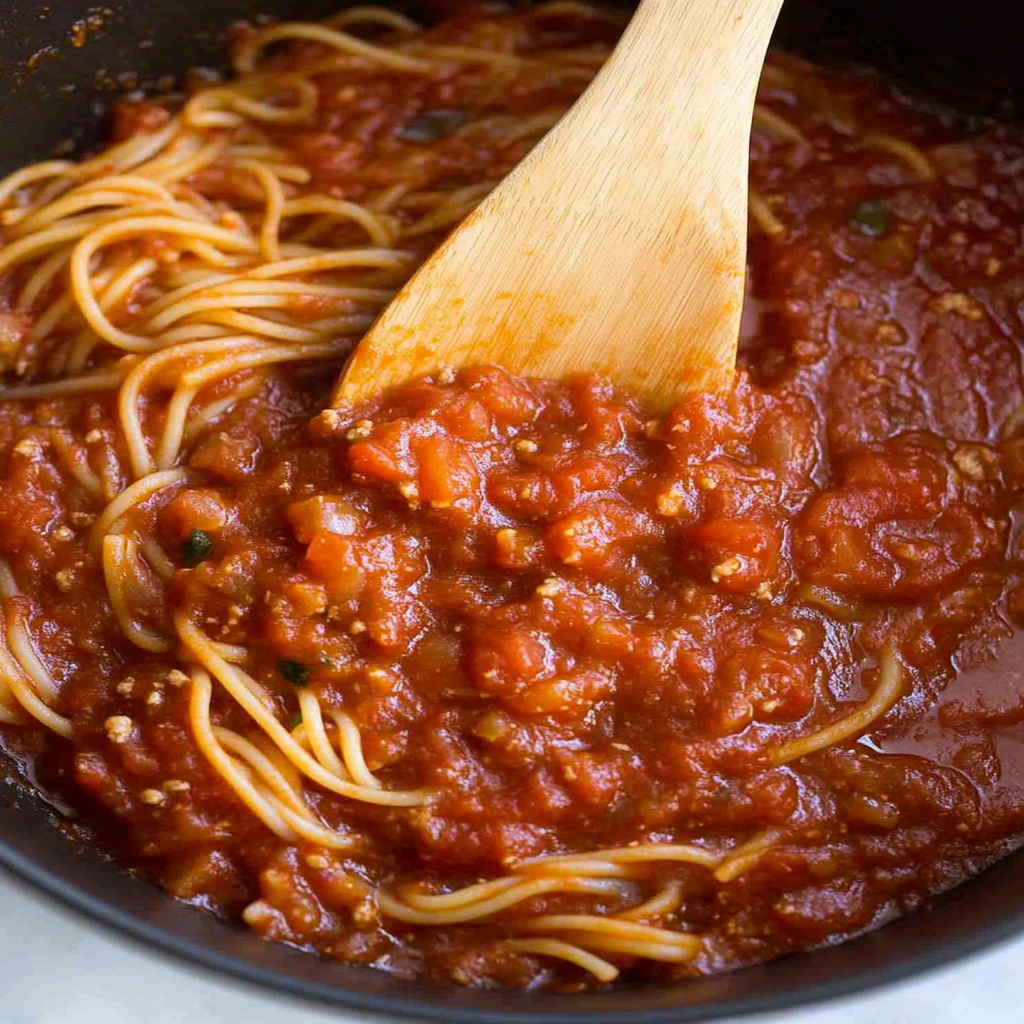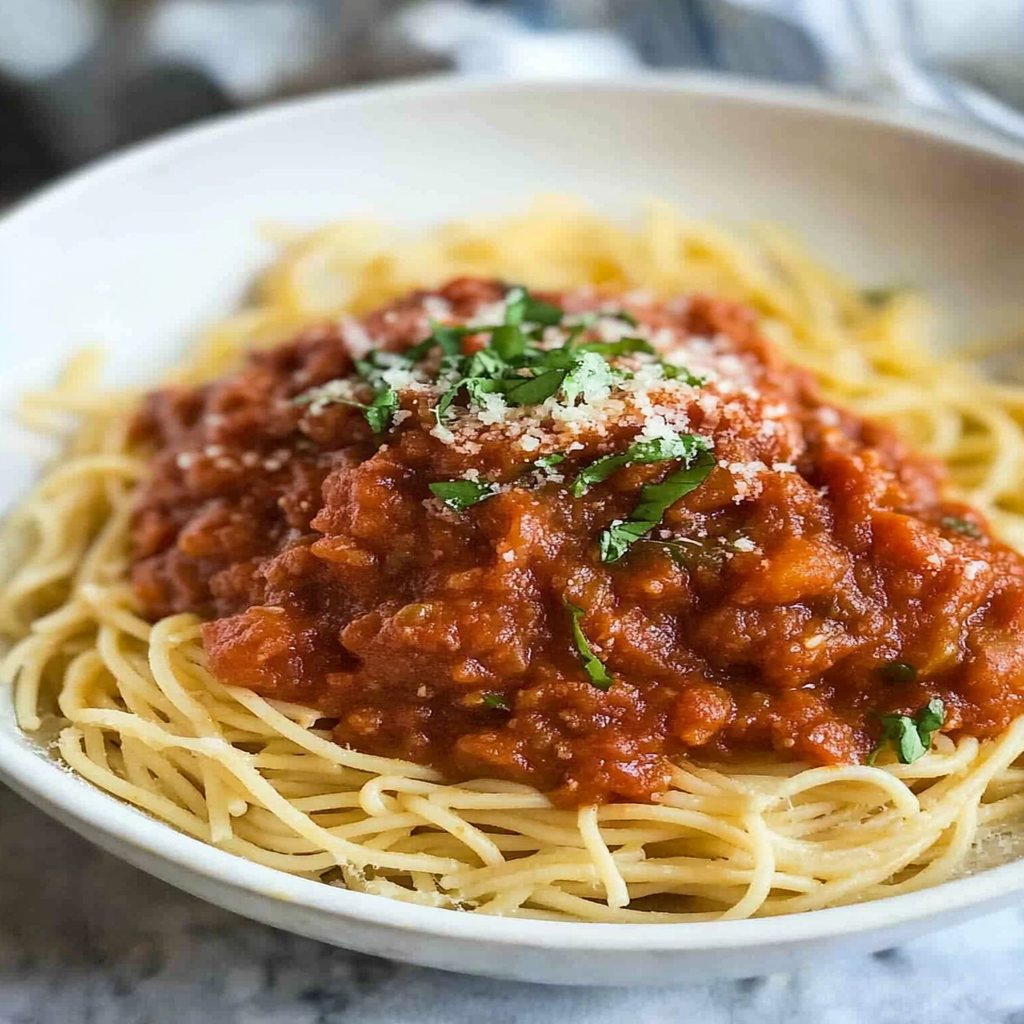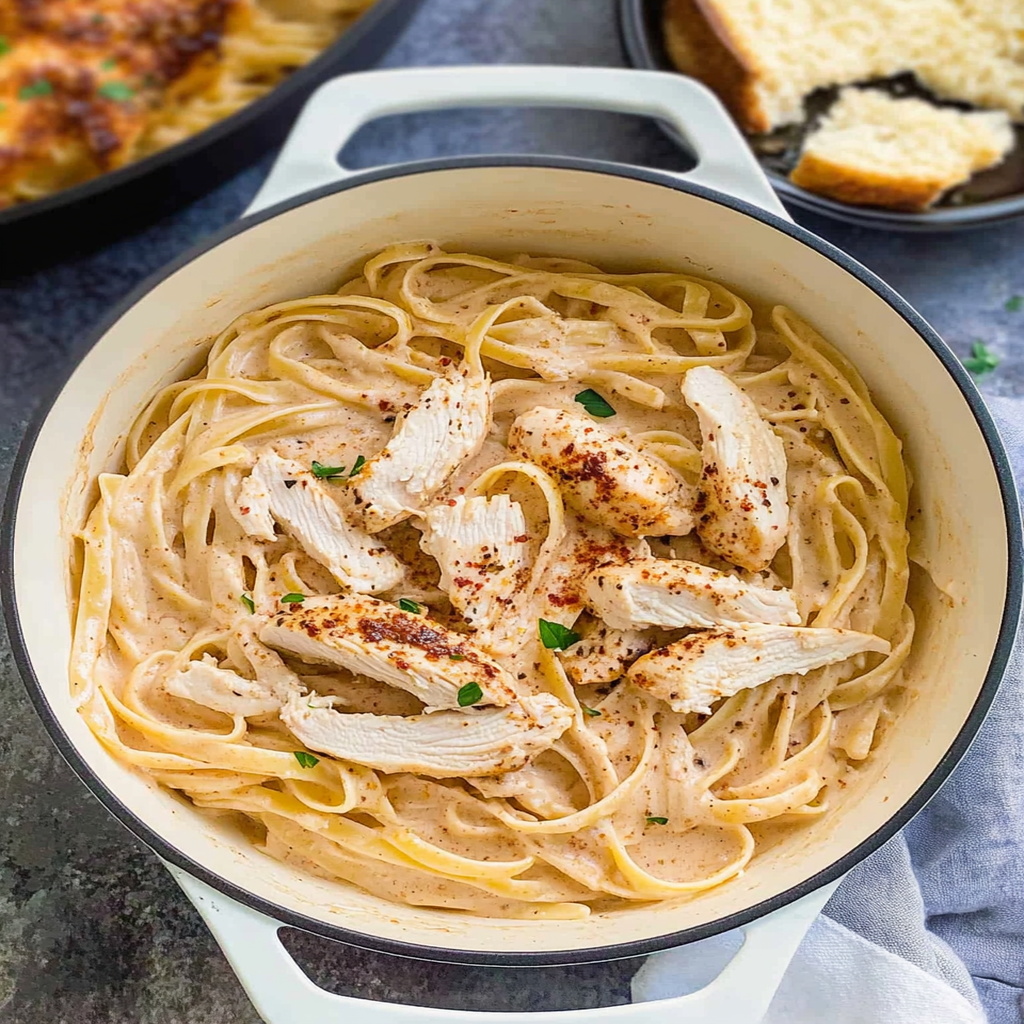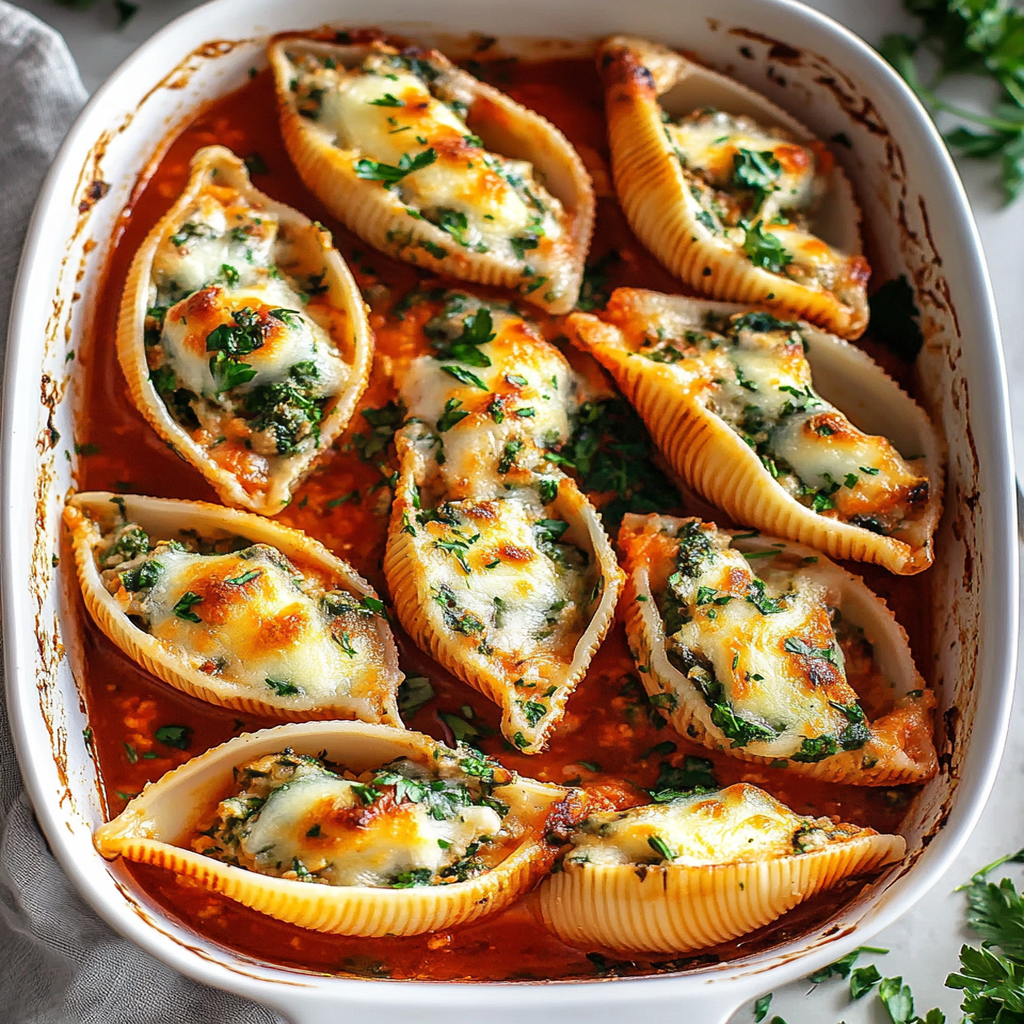Creating the perfect spaghetti sauce can transform any meal into a delightful culinary experience. This homemade spaghetti sauce is not only simple to prepare but also packed with robust flavors that will leave your taste buds dancing. Made with fresh ingredients like ripe tomatoes, aromatic garlic, and fragrant herbs, this recipe is a go-to for weeknight dinners or special occasions alike. Whether you’re serving it over al dente pasta or using it as a base for lasagna or pizza, this rich and savory sauce will quickly become a family favorite. In just under an hour, you can whip up a batch that rivals restaurant-quality sauces. The beauty of this recipe lies in its versatility; feel free to adjust the seasonings to suit your palate or add your favorite veggies for an extra nutritional boost. With each bite, you’ll appreciate the balance of flavors and the satisfaction of serving something homemade. Dive into our detailed guide and bring the authentic taste of Italy right to your kitchen with this delectable spaghetti sauce.
Why You’ll Love This Spaghetti Sauce
- Quick and Easy: Minimal prep time and straightforward steps make this recipe stress-free, even for novice cooks
- Flavorful and Versatile: Enjoy outstanding flavor with ingredients you can easily customize by adding your favorites or adjusting spices
- Perfect for Any Occasion: Ideal for casual gatherings, holiday celebrations, or weeknight dinners

Ingredients for Spaghetti Sauce
Here’s what you’ll need to make this delicious dish:
- Olive Oil: Use extra virgin olive oil for its rich flavor; it enhances the overall taste of the sauce.
- Onion: A medium onion adds sweetness; finely chop it for even cooking.
- Garlic: Fresh garlic cloves provide aromatic depth; use minced garlic for a more intense flavor.
- Canned Tomatoes: Choose whole peeled tomatoes or crushed tomatoes for a rich base; San Marzano tomatoes are highly recommended.
- Dried Oregano: This herb offers traditional Italian flavor; sprinkle in as needed to elevate the taste.
- Dried Basil: Add dried basil to complement the tomato flavor; it’s essential for that classic marinara taste.
- Sugar: A pinch balances acidity from tomatoes; use brown sugar for added depth if desired.
- Salt and Pepper: Season to taste; these staples enhance all other flavors in the dish.
The full ingredients list, including measurements, is provided in the recipe card directly below.
How to Make Spaghetti Sauce
Follow these simple steps to prepare this delicious dish:
Step 1: Sauté Onion and Garlic
Begin by heating olive oil in a large saucepan over medium heat. Add chopped onion and sauté until it becomes translucent (about 5 minutes). Stir in minced garlic and cook for another minute until fragrant.
Step 2: Add Tomatoes
Pour in canned tomatoes (including juice), breaking them up with a spoon if using whole tomatoes. Stir well to combine everything.
Step 3: Season the Sauce
Sprinkle in dried oregano, dried basil, sugar, salt, and pepper. Bring to a gentle simmer while stirring occasionally.
Step 4: Simmering Process
Reduce heat to low and let the sauce simmer uncovered for about 30 minutes. This allows the flavors to meld beautifully while stirring occasionally.
Step 5: Adjust Seasoning
Taste your spaghetti sauce after simmering and adjust seasoning if necessary by adding more salt, pepper, or herbs according to preference.
Step 6: Serve It Up
Once done simmering, remove from heat. Toss with cooked pasta of choice or serve as desired—perfect over spaghetti noodles!
Transfer to plates and drizzle with additional olive oil or grated cheese for the perfect finishing touch.

Tips and Tricks
Here are some helpful tips to ensure the best results for your dish:
- Fresh Ingredients: Using fresh garlic and good-quality tomatoes enhances flavor significantly.
- Longer Simmering: For deeper flavor development, consider simmering longer than suggested—upwards of an hour works wonders!
- Add Vegetables: Feel free to incorporate diced bell peppers or mushrooms during sautéing for extra texture and nutrition.
How to Serve spaghetti sauce
This spaghetti sauce is versatile and pairs wonderfully with:
- Pasta: Classic choice that absorbs the sauce, creating a satisfying meal.
- Rice or Potatoes: A hearty base that soaks up the delicious sauce.
- Fresh Salad: Adds a crisp and refreshing contrast to the rich flavors of the dish.
- Crusty Bread: Perfect for enjoying every last drop of the flavorful sauce.
Feel free to pair it with your favorite sides for a personalized meal!
Make Ahead and Storage
- Make Ahead: You can prepare the spaghetti sauce in advance by cooking it for about 30 minutes. Allow it to cool, then store it in an airtight container in the refrigerator for up to three days.
- Storing: Leftover spaghetti sauce should be stored in a sealed container. It will stay fresh in the fridge for about three to four days or can be frozen for up to three months.
- Reheating: To reheat, warm the sauce on the stovetop over medium heat for about 10-15 minutes until heated through. If frozen, allow it to thaw overnight in the fridge before reheating.
Suggestions for spaghetti sauce
Avoiding Overcooking the Sauce
One common mistake when making spaghetti sauce is overcooking. While simmering helps develop flavors, cooking it for too long can break down the tomatoes and herbs, creating a mushy texture. Aim for a gentle simmer rather than a rapid boil. This method allows the ingredients to meld without losing their fresh taste. Keep an eye on it and stir occasionally to prevent sticking. Remember, letting your sauce rest off the heat for a few minutes before serving can enhance its flavor, giving it time to settle. This simple step can elevate your spaghetti sauce significantly.
Using Low-Quality Tomatoes
When preparing spaghetti sauce, the quality of your tomatoes greatly influences the final dish. Avoid using low-quality canned or fresh tomatoes. Instead, opt for San Marzano tomatoes or organic varieties known for their rich flavor and sweetness. These higher-quality tomatoes have less acidity and more natural sugars, resulting in a balanced sauce. If using fresh tomatoes, select ripe ones that give slightly when pressed. By prioritizing quality ingredients, you ensure that your spaghetti sauce tastes authentic and delicious.
Forgetting to Season Properly
Another pitfall is neglecting seasoning throughout the cooking process. Many home cooks add salt only at the end, which can lead to uneven flavors in your spaghetti sauce. To avoid this mistake, season in layers: add salt and pepper as you sauté vegetables and again while simmering the sauce. Taste frequently to adjust the seasoning as needed. Additionally, incorporating herbs like basil or oregano at different stages enhances complexity in flavors. Proper seasoning makes all the difference in elevating your spaghetti sauce from average to exceptional.
Skipping Aromatics
Skipping aromatics is a key error that can diminish the depth of flavor in your spaghetti sauce. Aromatics such as onions, garlic, and carrots lay a flavorful foundation for your dish. Start by finely chopping these ingredients and sauté them until they become fragrant and translucent before adding tomatoes or other components. This step releases essential oils and creates a savory base that enhances overall taste. Don’t rush this process; allowing aromatics to cook properly is crucial for achieving a rich and satisfying spaghetti sauce.

FAQs
What are the best types of tomatoes for spaghetti sauce?
When choosing tomatoes for spaghetti sauce, opt for high-quality varieties like San Marzano or Roma tomatoes due to their sweet flavor and low acidity levels. These types offer a robust taste that enhances your sauce significantly. If fresh tomatoes are preferred, select ripe options that yield slightly when squeezed; this indicates ripeness and juiciness. Canned whole tomatoes are also excellent if fresh ones aren’t available; just make sure they’re packed in juice rather than puree for better flavor retention during cooking.
How can I thicken my spaghetti sauce?
To thicken your spaghetti sauce without compromising its flavor, consider reducing it by simmering uncovered until it reaches your desired consistency. You can also add tomato paste or finely grated cheese as thickening agents while stirring well to blend them into the mix seamlessly. Another option is incorporating pureed vegetables like carrots or bell peppers into the sauce; this not only thickens but also adds nutritious elements without overpowering flavors.
Can I make spaghetti sauce ahead of time?
Yes! In fact, making spaghetti sauce ahead of time often improves its flavor as it has more time to develop after resting in the refrigerator overnight. Prepare your sauce according to your recipe and allow it to cool completely before transferring it to an airtight container for storage in the fridge or freezer. When ready to serve, reheat gently on low heat until warmed through; this method retains its rich taste while saving you time during busy weeknights.
How do I store leftover spaghetti sauce?
To store leftover spaghetti sauce effectively, let it cool completely before transferring it into airtight containers suitable for refrigeration or freezing. If storing in the refrigerator, consume within three to four days for optimal freshness; if freezing, label with dates and use within three months for best quality. Reheat gently on low heat when ready to enjoy again; adding a splash of water or broth can help restore its original consistency if it thickens during storage.
Conclusion for spaghetti sauce
In summary, preparing an outstanding spaghetti sauce requires attention to detail—from selecting high-quality ingredients to proper seasoning techniques throughout cooking stages. Avoid common mistakes such as overcooking or neglecting aromatics that lay essential flavor foundations. Always choose ripe tomatoes suited for sauces and consider thickening methods if necessary while storing leftovers correctly extends their shelf life effectively too! Following these guidelines will ensure that your homemade pasta dish stands out with remarkable taste every time you serve it up!
[tasty-recipe id=”3763″]




Leave a Comment